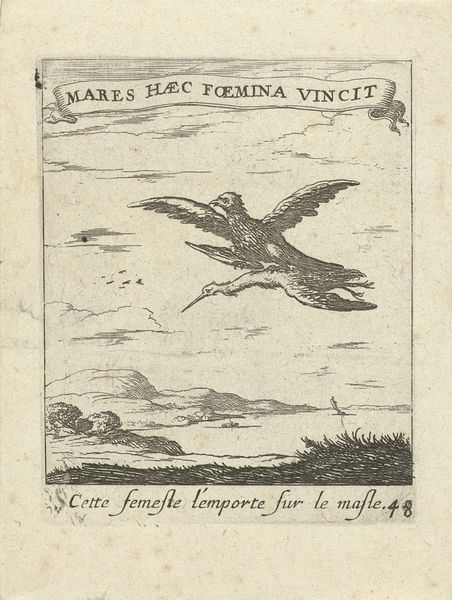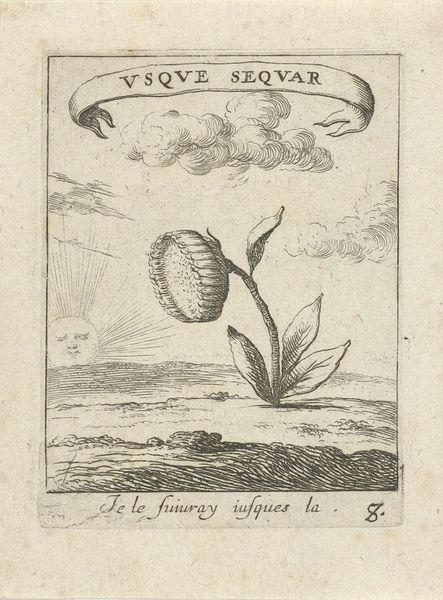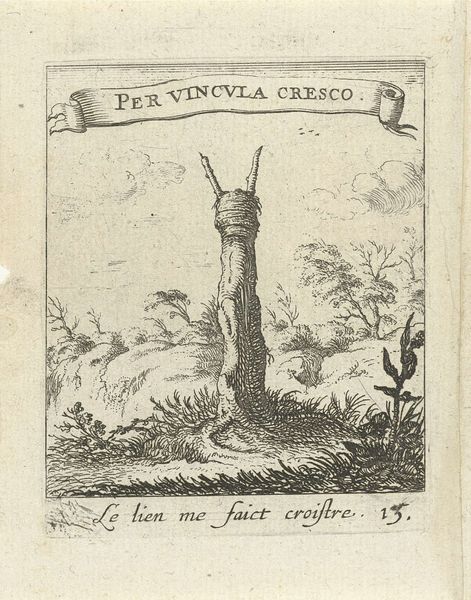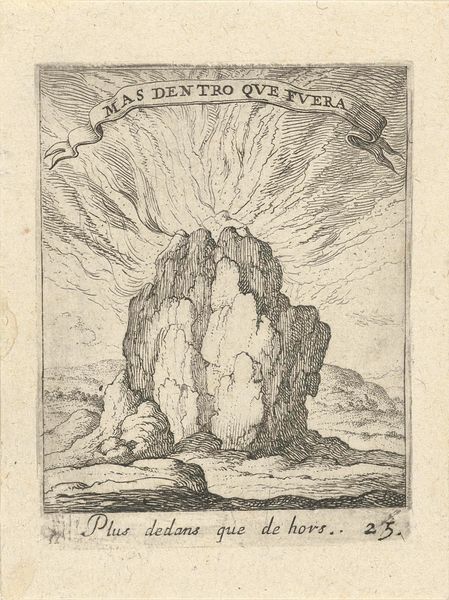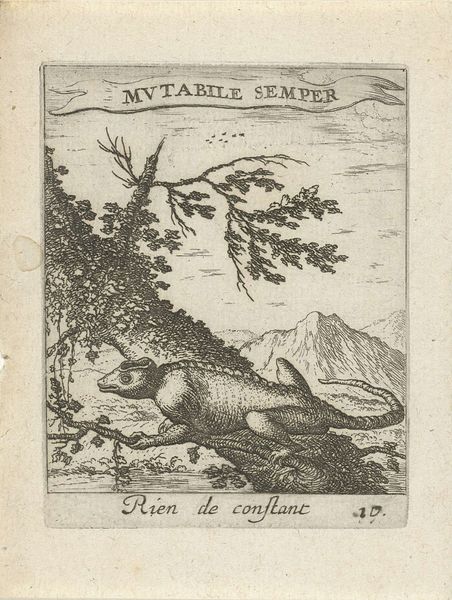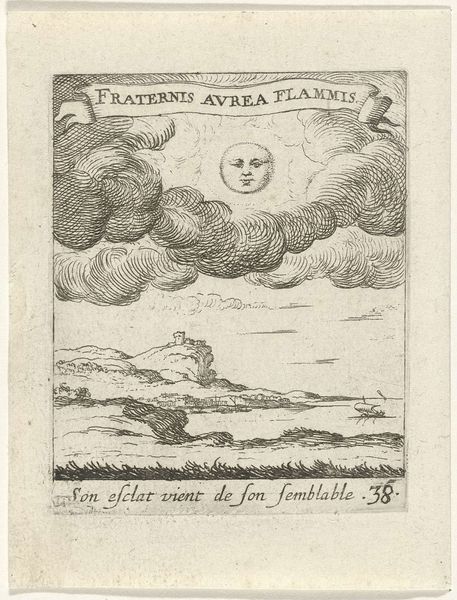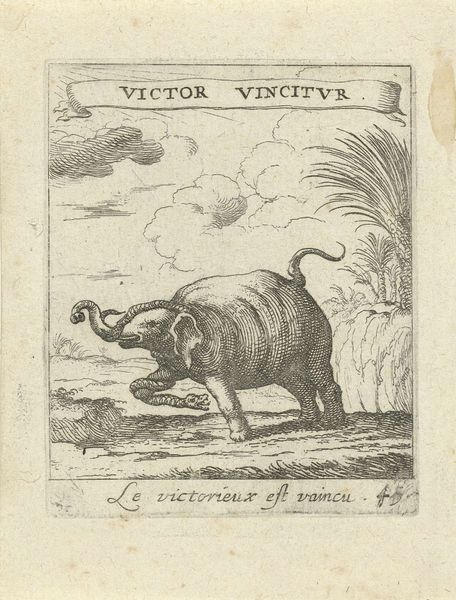
Dimensions: height 85 mm, width 66 mm
Copyright: Rijks Museum: Open Domain
Curator: Welcome! Here we have "Feniks," a print made in 1672 by Albert Flamen. The print presents a phoenix rising from what seems to be a pyre, centered in the composition. Editor: It's so delicate. You can almost feel the heat radiating from those fine etched lines. The starkness, that paper quality—it really underscores the themes of resilience and renewal that the phoenix embodies. Curator: Exactly! Flamen uses the traditional engraving method here, a labor-intensive process involving carving lines into a metal plate to hold ink. This suggests a considered production process for wider distribution, highlighting themes of endurance through readily available reproduction methods. It is a social symbol more than an object d'art, wouldn't you say? Editor: Most definitely! The image of the phoenix is powerful – present across so many cultures. Even the text at the top, “INVITO FUNERE VIVET,” or "he lives in spite of death", encapsulates its enduring significance. And the script below, in French, says: “He will live, despite the death.” Curator: It is intriguing how this relatively accessible medium is utilized to propagate such potent and timeless symbols of renewal. It makes me ponder how artisans were regarded as vital to maintaining the collective cultural memory during the Enlightenment. The dissemination of these symbolic notions into daily material culture signifies social awareness and an artistic response to human tragedy. Editor: It serves as a poignant meditation on history, memory, and the capacity for life to persevere through even the darkest periods. Thinking of what this image meant in 1672 brings up complex themes. The Phoenix carries immense cultural and psychological weight through time. Curator: I find it compelling how the very medium, printmaking, parallels the idea of regeneration, as this allows continuous replications that allow for both cultural and artistic rebirth. Editor: Absolutely. And reflecting upon the phoenix's story—re-creation after destruction—gives rise to ruminations on human potential for recovery after difficulty. What could renewal look like now, or, further down the line, even? Curator: The intersection of craft, symbolism, and widespread consumption in this image encourages reflection on the enduring cultural memories and continuous symbolic impact ingrained in Albert Flamen’s "Feniks". Editor: And to appreciate this powerful creature—this delicate engraving—allows us a space for reflection. It grants access to contemplation on humanity and all its possible forms, after all.
Comments
No comments
Be the first to comment and join the conversation on the ultimate creative platform.

